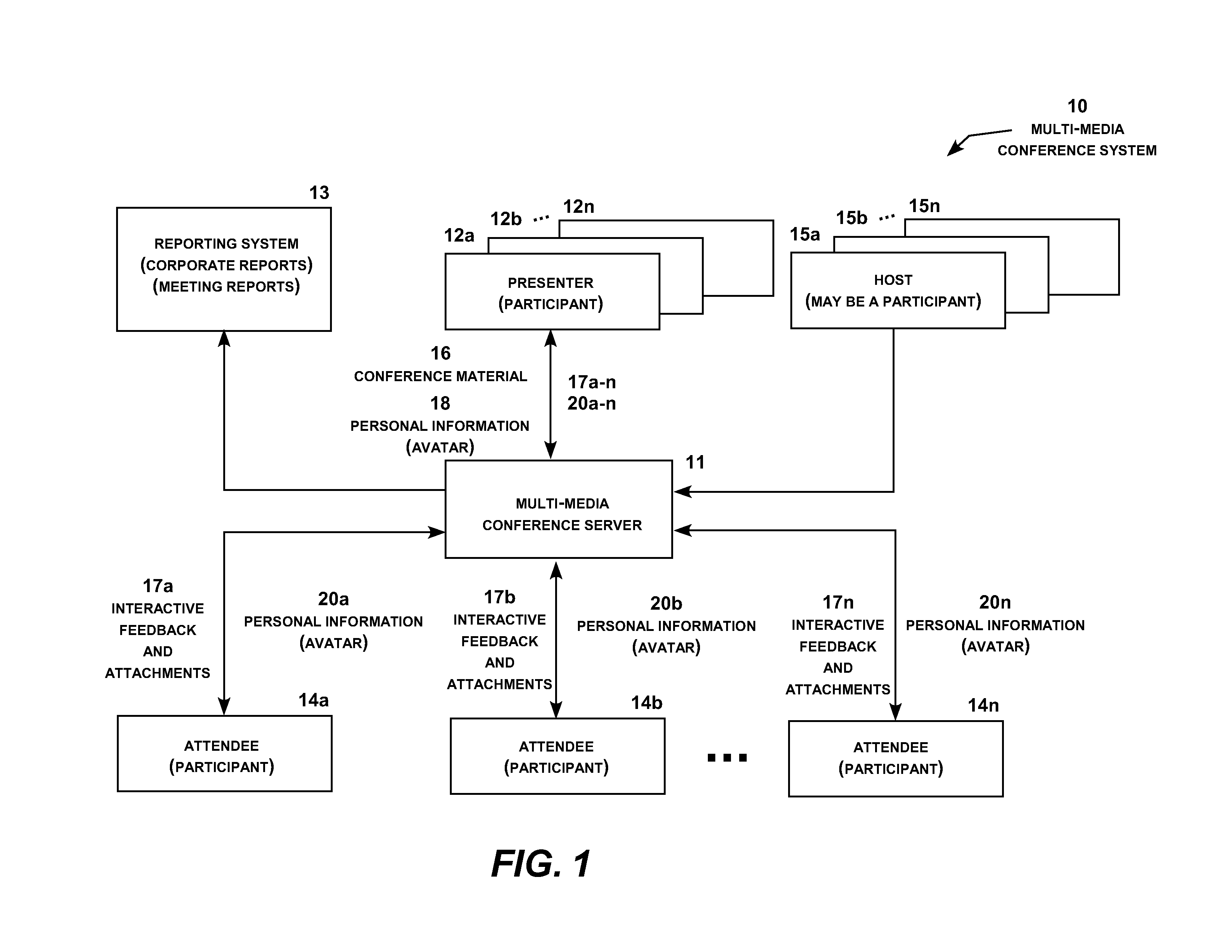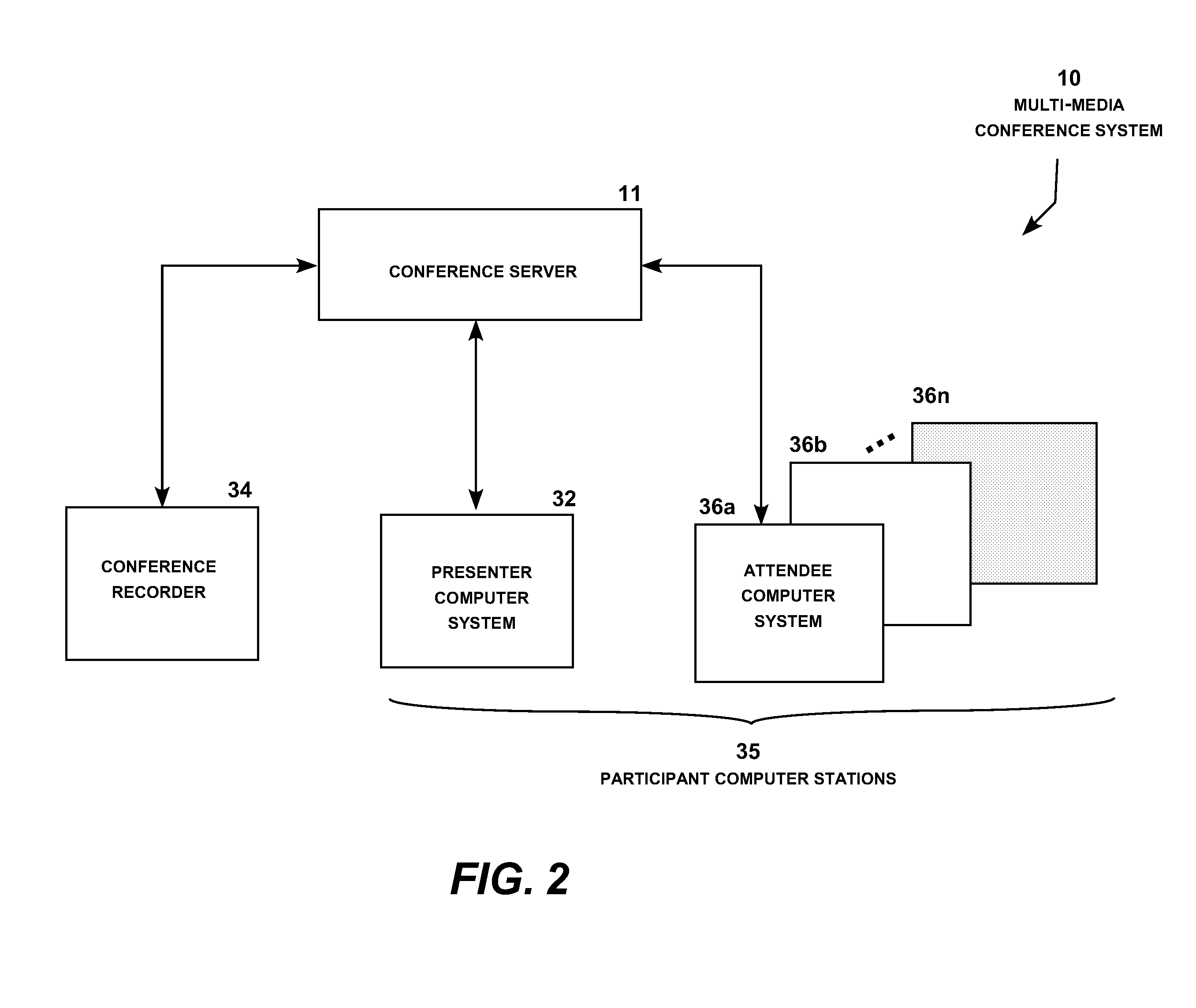Multi-media conferencing system
a multi-media and conference system technology, applied in the field of multi-media conference systems, can solve the problems of inability to actively and physically view and verbally communicate multiple participants, and inability to meet and communicate with participants
- Summary
- Abstract
- Description
- Claims
- Application Information
AI Technical Summary
Benefits of technology
Problems solved by technology
Method used
Image
Examples
Embodiment Construction
[0042]The multi-media conferencing system solves the problems with conventional conferencing systems and launches a new concept in the web conferencing market by bringing together many aspects of a face-to-face meeting, along with a rich compliment of multi-media features that are not typically available at face-to-face meetings, into the virtual world. The multi-media conferencing system integrates visual, audio, independent data interaction and modification, collaboration of information, independent video and 3D model viewing and manipulation, and networking among all participants in the meeting. The application also allows for multi-tasking during the course of the meeting by splitting the conference display into multiple sectors for optimizing the ability to engage, participate and learn during the meeting. An attendee conference display typically shows two content sectors under the control of the presenter and a selectable number of other content sectors under the attendee's co...
PUM
 Login to View More
Login to View More Abstract
Description
Claims
Application Information
 Login to View More
Login to View More - R&D
- Intellectual Property
- Life Sciences
- Materials
- Tech Scout
- Unparalleled Data Quality
- Higher Quality Content
- 60% Fewer Hallucinations
Browse by: Latest US Patents, China's latest patents, Technical Efficacy Thesaurus, Application Domain, Technology Topic, Popular Technical Reports.
© 2025 PatSnap. All rights reserved.Legal|Privacy policy|Modern Slavery Act Transparency Statement|Sitemap|About US| Contact US: help@patsnap.com



